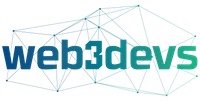
Newsletter #182: Lessons Learned
This week’s featured collector is ChicagoSpartan
ChicagoSpartan has some great Ethereum NFTs, and we especially love the pinned ones. Check it out at lazy.com/chicagospartan
The results of last week’s poll: Could NOUN FEST’S type of decentralized approach work in other industries, or is it too chaotic to scale?
Last week’s poll highlights the uncertainty within the NFT community regarding the scalability of decentralized funding models like NOUN’s approach. Only 21% of respondents believe such models could successfully be applied to other industries, reflecting tempered optimism about decentralized governance and innovation. However, a notable 37% see these systems as too chaotic to scale, likely pointing to concerns around operational inefficiency, decision-making breakdowns, or the complexity of managing decentralized funding in more traditional industries. Interestingly, the largest group—42%—remains undecided, suggesting that while decentralized funding approaches are intriguing, there is still much skepticism or a lack of clarity about how they would perform outside of niche spaces like NFT communities.
Lessons Learned From Blur
The most recent episode of the WuBlockchain podcast is a must-listen for anyone deeply invested in the NFT space, offering expert analysis and market insights. In this episode, two analysts with a strong background in on-chain data, to dive into the current state of the NFT market, its future potential, and the investment pitfalls that even seasoned traders face. The conversation focuses on why tokens like Blur, once highly anticipated by collectors, have underperformed, while also exploring the broader cooling of the NFT market and the impact on projects like Magic Eden.
For NFT collectors, this episode is particularly compelling because it offers a rare glimpse into the risks of relying too heavily on data-driven strategies. The guest candidly reflects on his own experience, where he misjudged both the NFT market’s trajectory and the team behind Blur. He explains how his optimism, based on on-chain data, led to poor investment decisions, which will resonate with collectors who have faced similar challenges. This honest discussion highlights the unpredictability of the NFT space and the importance of understanding team dynamics beyond just the numbers.
A key takeaway for collectors is the podcast’s exploration of how teams can create information asymmetry for retail investors, which often leaves collectors and traders in the dark about critical strategic shifts. For example, Blur’s unexpected pivot to Ethereum Layer 2 caught many by surprise, disrupting the investment thesis many had around its token. This discussion emphasizes the importance of staying vigilant not only about market trends but also about the actions and future directions of project teams, especially in a rapidly evolving space like NFTs.
The episode also digs into the broader trends of the NFT market, including why major NFT-related tokens like Blur and Tensor have struggled despite their initial promise. This is highly relevant for collectors who are navigating a bearish market, as the conversation touches on how platforms like Magic Eden are positioning themselves with new tokens and multi-chain strategies. For collectors seeking to understand these shifts, this podcast offers valuable insights that can help them stay ahead in an uncertain market.
Finally, the conversation addresses a crucial issue for many NFT collectors: the real utility of governance tokens. As the guests point out, many projects issue governance tokens that promise to give holders a say in the future of the platform, but these tokens often have limited impact after their launch. For collectors holding such tokens with the hope of future utility or airdrops, this podcast offers a reality check on whether these investments will pay off. This episode not only helps NFT collectors reflect on their current strategies but also equips them with the knowledge to make more informed decisions going forward.
With its blend of expert analysis, real-world investment stories, and candid reflections, this episode of the WuBlockchain podcast offers a nuanced look at the NFT market and is a must-listen for anyone looking to deepen their understanding of the space.
Read, or listen, to the full podcast at WuBlockchain.
What is the most important factor for you when investing in NFTs?
We ❤️ Feedback
We would love to hear from you as we continue to build out new features for Lazy! Love the site? Have an idea on how we can improve it? Drop us a line at info@lazy.com

























